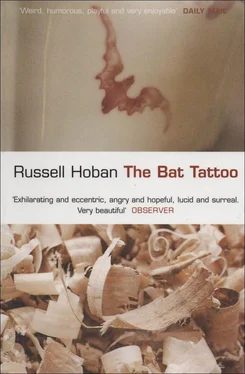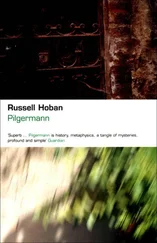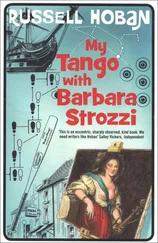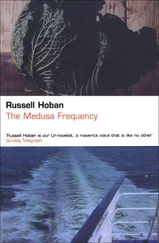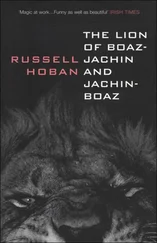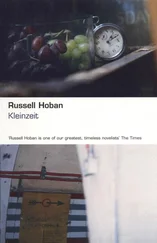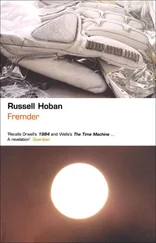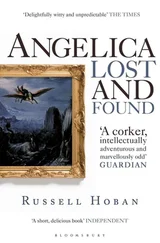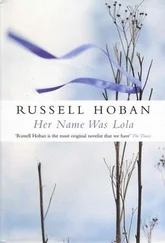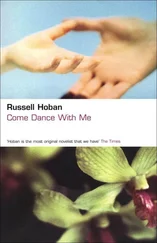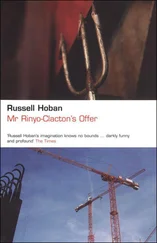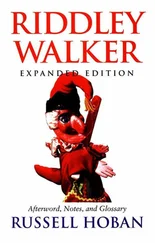Russell Hoban - The Bat Tattoo
Здесь есть возможность читать онлайн «Russell Hoban - The Bat Tattoo» весь текст электронной книги совершенно бесплатно (целиком полную версию без сокращений). В некоторых случаях можно слушать аудио, скачать через торрент в формате fb2 и присутствует краткое содержание. Год выпуска: 2004, Издательство: Bloomsbury Publishing PLC, Жанр: Современная проза, на английском языке. Описание произведения, (предисловие) а так же отзывы посетителей доступны на портале библиотеки ЛибКат.
- Название:The Bat Tattoo
- Автор:
- Издательство:Bloomsbury Publishing PLC
- Жанр:
- Год:2004
- ISBN:нет данных
- Рейтинг книги:4 / 5. Голосов: 1
-
Избранное:Добавить в избранное
- Отзывы:
-
Ваша оценка:
- 80
- 1
- 2
- 3
- 4
- 5
The Bat Tattoo: краткое содержание, описание и аннотация
Предлагаем к чтению аннотацию, описание, краткое содержание или предисловие (зависит от того, что написал сам автор книги «The Bat Tattoo»). Если вы не нашли необходимую информацию о книге — напишите в комментариях, мы постараемся отыскать её.
The Bat Tattoo — читать онлайн бесплатно полную книгу (весь текст) целиком
Ниже представлен текст книги, разбитый по страницам. Система сохранения места последней прочитанной страницы, позволяет с удобством читать онлайн бесплатно книгу «The Bat Tattoo», без необходимости каждый раз заново искать на чём Вы остановились. Поставьте закладку, и сможете в любой момент перейти на страницу, на которой закончили чтение.
Интервал:
Закладка:
At that time I had not yet come into my inheritance. I was on a student allowance, Solange also; therefore we travelled by train and bus. It was a Saturday evening in October, already dark when we arrived. We registered at the Hôtel de la Tête Noir in the rue de l’Arquebuse. Our key for Room 309 was on a ring attached to a miniature wine bottle with the name of the hotel on the label. Such key-rings were sold as souvenirs at the reception desk; I have one before me as I write this. I cannot say it is empty because it has no inside to be filled — it is only a solid piece of wood in the shape of a bottle.
A middle-aged German couple came in as we stood at the reception desk. The man spoke French with an accent that pushed the words ahead of him like hostages. He explained that he and his wife were touring Burgundy and enjoying the food and the wines. I pitied them that they were not us.
We bought a half-bottle of the local Chardonnay and one of the Pinot Noir and took them up to our room. It was a pleasant little room; the flowered bedspread and the cosy lamps welcomed us; the slanting ceiling embraced us as we embraced each other. The wine was round and juicy; we drank it by the window from where we viewed the Champ de Mars and the Maine, illuminated and as full of detail as buildings in a model railway. Then we went out to see the cathedral for the first time.
Past dim cafés and ancient houses we walked uphill on narrow pavements. Many of the houses were dark and seemed empty; the streets were very quiet, with sometimes the sound and lights of cars, sometimes the single white eye and whine of a moped. Up the rue aux Cordiers we went, the Grande and Petite rues Chauchien and the rue des Bancs where we continued past the Musée Rolin to the Place du Terreau. There we saw the cathedral with its spire black against the dark sky.
Now there is a restaurant, Le Petit Rolin, just opposite the steps at the west portal of the cathedral. It was not there when Solange and I came to Autun; there were no sounds of diners and drinkers to distract us as we stood at the base of the steps and looked up at the tympanum. Spotlights pushed away the darkness from it and showed us the stone with a hard brightness not seen in the evenings of the twelfth century. This tympanum is a half-circle over the two great doors, the lintel supported by capitals at each end and a trumeau in the centre. The trumeau, with the figures of Lazarus, Mary, and Martha, is a reconstruction, the original one having been thrown away.
On the tympanum Christ, in high relief, presides over the Last Judgement. He is shown in an elliptical enclosure called a mandorla. His pose is fully frontal; his elbows are at his sides, his forearms extended, palms upturned; his knees are bent, his legs turned out. His face looks straight ahead; his mouth is slightly open; he seems without anger, seems entranced. He has become not so much a judge as a medium: through him like lightning pass divine mercy or implacable wrath. I was a hardened atheist, yes, but I cowered before this Christ, this living stone, when I saw him that first time. On the mandorla are carved the words: OMNIA DISPONO SOLUS MERITOSQUE CORONO QUOS SCELUS EXERCET ME JUDICE POENA COERCET [I alone dispose of all things and crown the just. Those who follow crime I judge and punish.]
‘The one who was the victim is now the judge,’ said Solange.
‘He is the Lamb who was slain,’ I murmured as if Father Toussaint stood over me. Forgotten verses from Revelation came to me: “‘And the kings of the earth, and the great men, and the rich men, and the chief captains and the mighty men, and every bondman, and every free man, hid themselves in the dens and in the rocks of the mountains. And said to the mountains and rocks, ‘Fall on us and hide us from the face of him that sitteth on the throne, and from the wrath of the Lamb: For the great day of his wrath is come, and who shall be able to stand?”’
Solange was watching me. ‘Are you OK?’ she said. ‘It goes?’
‘Yes,’ I said. ‘It goes.’
‘“Gislebertus hoc fecit .”’ She read the words carved in the stone at the feet of Christ. [Gislebertus made this.] ‘It was done by a man, a stonecarver who was paid for the job. He did not descend the mountain with the tympanum under his arm.’
‘I know,’ I said. ‘And in any case there is no God.’
‘Adelbert, you piss into the wind.’
‘What do you mean?’
‘The belief in God is God. The God in people’s heads does all the things God is meant to do, so He exists even for those who claim that He does not exist.’ She spoke the word ‘He’ with a capital letter. ‘And this God in the head of Gislebertus used him to carve this tympanum for the glorification of His only son.’
‘I’m not sure I follow your reasoning.’
‘That’s OK.’ She kissed me. ‘God will forgive you.’
‘So you believe in Him then?’
‘How could I not? I prayed for an Adelbert kind of guy and He gave me you.’ More kisses.
Filling the stone half-circle around Christ are angels with trumpets, the Holy Virgin, the saints, the weighing of heavenbound souls by the Archangel Michael and those of the damned by a hideous devil who opposes him. Below them on the lintel are the saved in ecstasy and the sinners in despair.
Those figures! Gislebertus, having called them into being, allotted them spaces in which to fit themselves and their actions. Their bodies and limbs grew long or short in such shapes as were necessary for their gestures. Motionless in the stone they walk, creep, sing, weep, crouch, leap; they have no rest from the life hammered into them by this stonecarver who chiselled his name under the feet of Christ. One particular sinner on the lintel caught our eye; his scream echoes in the silent stone as two great hands (nothing more is visible) grab him by the head to pull him up out of sight. ‘Gislebertus could not refrain from showing us this,’ said Solange. ‘He was compelled.’
She had brought her Nikon with her; she was rarely without it; in our Paris walks she photographed every thing from every angle with short lenses and long ones, film both fast and slow. Now she put the camera to her eye and looked through the viewfinder. Then she slung the Nikon from her shoulder again without taking any pictures.
‘No pictures?’ I said. ‘Even without flash you have enough light.’
She said, ‘When we’re home I don’t want to look at a little glossy print of what the camera saw, I want the whole thing big in my eye as it is now. I owe Christ and Gislebertus that much.’
‘Christ has got into your head?’
‘He was a man. They hung him on a cross with nails through his hands and feet and gave him vinegar to drink. The nails tore his hands as his body sagged until his diaphragm collapsed and he could no longer breathe. Now at communion the believers eat his body and drink his blood. Here in stone he offers himself.’
For a while we were silent, then Solange said, ‘This Gislebertus, I think he would have been a chain smoker if there had been cigarettes in the twelfth century. He was addicted to stone, I know that — he could not leave it alone. Every time he found an empty space of stone he had to let in Heaven and Hell. He was like Thelonious Monk with a chisel and mallet.’
‘Thelonious Monk!’
‘Exactly,’ she said. ‘Very funky and off-straight. The performances of Gislebertus had of course to be planned but they are like jazz improvisations in stone. I think he must have been an obsessive, and to such people the Romanesque style comes naturally: again and again they reiterate the folds in garments — you can almost hear the left hand doing the bass part while the right hand carves the tune.’ Ah, Solange! She had a husky voice, her breath was sweet, her cheek cool in the fresh October breeze. She liked the sound of what she had said and gave me a sidelong glance and a little smile.
Читать дальшеИнтервал:
Закладка:
Похожие книги на «The Bat Tattoo»
Представляем Вашему вниманию похожие книги на «The Bat Tattoo» списком для выбора. Мы отобрали схожую по названию и смыслу литературу в надежде предоставить читателям больше вариантов отыскать новые, интересные, ещё непрочитанные произведения.
Обсуждение, отзывы о книге «The Bat Tattoo» и просто собственные мнения читателей. Оставьте ваши комментарии, напишите, что Вы думаете о произведении, его смысле или главных героях. Укажите что конкретно понравилось, а что нет, и почему Вы так считаете.
